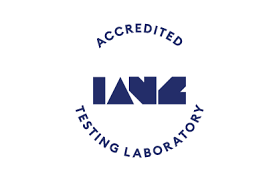Guidelines for Understanding Methamphetamine Test Results
When Analytica tests samples for residues of methamphetamine, interpretation of the results of that testing is carried out by the person or party who have collected the samples. A range of factors need to be taken into account when doing this - requiring specific knowledge of the property that the samples have been collected from, and the reason that the testing is taking place.
Interpreting levels of methamphetamine
There are some common standards or guidelines used when interpreting methamphetamine test results, which we have provided links to on this page. The sampler may provide information on which guidelines are considered relevant to a particular situation in their report.
-
New Zealand Standards & Guidelines
-
Australian Guidelines
Interpreting levels of amphetamine, ephedrine, and pseudoephedrine
Standards and guidelines may only refer to concentrations of methamphetamine. Analytica’s reports also include concentrations of 3 other compounds that are commonly associated with some forms of methamphetamine manufacture (amphetamine, ephedrine, and pseudoephedrine). If concentrations of one or more of these compounds are elevated, the sampler may take this into account when making recommendations about follow up action.
New Zealand Standards & Guidelines
The following provide links to the 3 main sources currently used for interpretation of methamphetamine test results in NZ.
Guidelines for the Remediation of Clandestine Methamphetamine Laboratory Sites (2010)
Click the link above to view the guidelines.
These guidelines were prepared by the New Zealand Ministry of Health to assist with the remediation of properties where clandestine manufacture of methamphetamine had taken place. A methamphetamine concentration of 0.5 µg/100 cm2 was specified as a maximum level following decontamination.
This document is also available on the New Zealand Ministry of Health website: http://www.moh.govt.nz
Testing and decontamination of methamphetamine-contaminated properties (2017)
Click the link above to view the NZS 8510:2017 Standard.
This NZ Standard (NZS 8510:2017) provides guidance about acceptable levels of methamphetamine residues arising from ‘use or production of methamphetamine’. Maximum methamphetamine concentrations of 1.5 µg/100 cm2 in high use areas, and 3.8 µg/100 cm2 in low use areas, were specified.
Methamphetamine contamination in residential properties: Exposures, risk levels, and interpretation of standards (2018)
Click the link above to view the PMCSA Report on methamphetamine contamination in residential properties.
This report, from the office of the Prime Minister’s Chief Science Advisor (Sir Peter Gluckman), considered the appropriateness of maximum methamphetamine residue levels in properties arising from use (but not manufacture). The report concluded that residues of 15 µg/100 cm2 were unlikely to cause adverse health effects if there was no evidence of manufacture in the property, and this was adopted as policy by the NZ government owned state housing entity (Housing NZ) soon after.
This document is also available on the Office of the Prime Minister’s Chief Science Advisor (PMCSA) Archive site: https://www.pmcsa.org.nz
Australian Guidelines
Clandestine Drug Laboratory Remediation Guidelines (2011)
Click the link above to view the guidelines.
These guidelines were developed by the Australian Government as a resource to be used when investigating and remediating contamination arising from the operation of a clandestine drug laboratory. A methamphetamine concentration of 0.5 µg/100 cm2 prior to remediation is stated as being ‘unacceptable’.

We are trusted experts
As innovators, we also work at the leading edge of new test development so that our customers can complete their latest research and development project, or take their new product or service to market.



